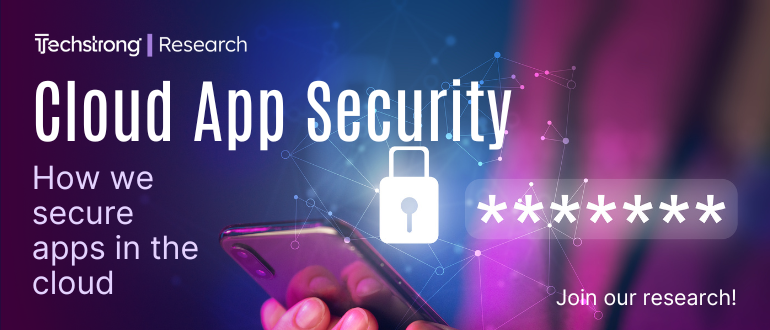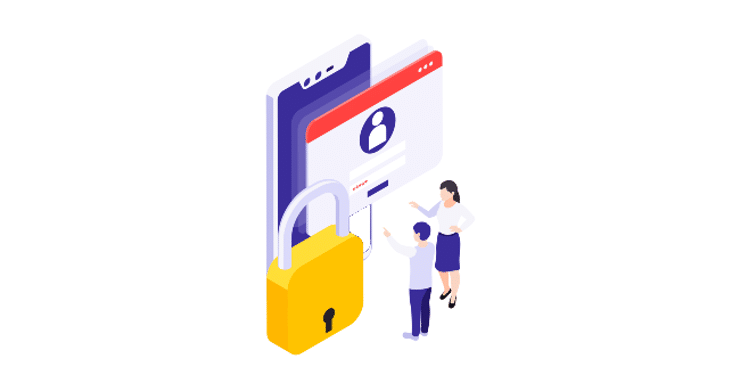
2024-5-20 18:24:59 Author: securityboulevard.com(查看原文) 阅读量:0 收藏
Did you know that 80% of breaches exploit legitimate identities and are difficult to detect? It’s hard to tell a hacker from a legitimate user’s behavior using regular security procedures and technologies.
What is An IAM Assessment?
An IAM assessment aims to analyze access control and authorization processes. The assessment takes into account governance, security, and identity management challenges. It identifies any gaps or places for improvement. It also serves as a road map for future enhancements in IAM procedures.
The primary objectives of an IAM assessment include:
- Clearly explaining access management best practices
- Making IAM solutions more effective throughout the enterprise
- Checking IAM security controls effectiveness
- Ensuring that data is secure

Why does your company require an IAM assessment?
IAM evaluations are required because data is continuously at risk. Credential theft and unauthorized access are the leading causes of data breaches. Poor access management policies create an open door for hackers.
IAM Compliance Benefits
A well-executed IAM compliance assessment provides several key benefits to your security posture. These advantages extend beyond simply increasing access control and include the following:
- Managing IAM maturity strategy: Assessing IAM solutions helps firms identify network access and key dangers.
- Prioritizing critical tasks: Different assets and users have different risks. A proper IAM evaluation prioritizes data security duties.
- Promoting strong IAM practices company-wide: Assessments create common policies with stakeholders, improving identity security everywhere.
- Assessments find security problems and improvements: Vulnerabilities can arise at any point. Only regular IAM assessments can find insecure access points and overprivileged users.
- Improved data security: Access control protects personal data first.
A thorough IAM assessment also provides compliance benefits. Assessments increase security safeguards and provide evidence of compliance.
Identity and Access Management Audit Checklist
This simple audit checklist is a handy reference for ensuring broad coverage:
- Focus on your identity and access management policy.
Use the assessment to review and enhance your security policies. Your IAM security strategy should consider current technologies and any IAM systems you want to adopt. It provides formal rules for managing identities and protecting your network assets. Additionally, it should make responding to security problems much easier.
- Assign IAM roles and responsibilities
Clearly define who is responsible for aspects of identity and access management. This may include:
- Manage identities
- Offboarding accounts
- Checking administrative privileges
- Data governance involves quality assurance
- Review privileged user credentials
Reduce the number of accounts with privileged access. These accounts pose the greatest security risk, giving users the most flexibility on the network. When possible, grant elevated rights temporarily.
- Schedule user reviews to clean up the IAM systems
Review all accounts to avoid overprovisioning. Use the “principle of least privilege” whenever possible. Create a user review schedule to evaluate user profiles constantly. Maintain better security by keeping privileges at a safe level.
- Apply segmentation of duties where appropriate
Each user should only be able to oversee some security procedures, including authentication, user permission assignment, and account offboarding. Divide jobs and add secondary approvals. This may compromise efficiency, but segregating duties will make security much tighter.
- Clean up unused accounts
Deleting expired accounts is a crucial part of access management. Automate the removal of accounts when employees leave roles or posts within the organization. Check for any generic accounts created during testing processes.
- Review compliance documentation
Double-check your IAM policies and cross-reference with relevant compliance IAM frameworks. Ensure an audit trail of user activity and security changes. Provide simple evidence of compliance for annual audits to ensure everything is clear.
IAM and Compliance
The rise of data breaches and privacy concerns has resulted in many data security rules and regulations. Almost every company is now required to follow standards that safeguard individual privacy. Regulations also impose penalties for lax security, making strict adherence necessary.
Unauthorized network access is the most common cause of data breaches. As a result, access management and control have become key regulatory issues.
Completing complex compliance reporting and IAM requirements can take time and effort.
It’s important to have a robust system to ensure accuracy while implementing IAM to meet compliance requirements.
IAM systems typically use the following protocols and standards based on industry, compliance demands, and security strategy:
- The OAuth 2.0 protocol allows third-party clients to access your organization’s protected resources using an access token. UMA and OAuth 2.0 operate together to manage third-party resource access.
- NGAC, or XACML, offers comprehensive access control and policy management for reviewing access requests.
- SAML streamlines web-based SSO for compliance and security by using digital signatures rather than passwords.
- SCIM automates access provisioning by sharing user attributes across tools, especially in cloud contexts.
- IAM technologies ease regulatory compliance by automating regulations and tracking access to sensitive data throughout the IT infrastructure.
Automation in IAM Compliance
Regulatory compliance agencies often need thorough documentation on policies and methods for user authentication, access management, and audit schedules. Automation can reduce human actions and ensure compliance with established policies. You may automate monitoring and logging of sensitive data interactions to ensure compliance. These techniques ensure timely and comprehensive reporting, demonstrating policy enforcement.
How do IAM Systems Promote Compliance?
The most effective way to understand the role of IAM in compliance is to examine some of the most essential data security regimes. Major requirements that organizations will face include:
GDPR
The European Union’s General Data Protection Regulation (GDPR) aims to safeguard individual privacy. It also seeks to maintain data security. GDPR applies to all organizations operating in the EU. Non-compliant businesses may face hefty penalties.
GDPR includes provisions for alerting individuals about data breaches. Companies must also erase private data upon request. Organizations must obtain consent before selling or recording confidential data. Furthermore, they must avoid all forms of data breaches.
IAM supports GDPR compliance in a variety of ways, including:
- Managing user access protects against cyber-attacks.
- Managing privileges ensures users have limited and secure electronic access to critical information.
- Organizing data governance to preserve data and enable quick erasure of client data upon request.
- Access and authorization are audited regularly.
PCI-DSS
The Payment Card Industry Data Security Standard (PCI-DSS) addresses credit and debit card processing. It applies to firms that handle customer credit. PCI-DSS is also relevant to eCommerce enterprises that handle payment card data.
PCI-DSS requirement 8.1 especially addresses identity and access management. Organizations must have “policies and procedures to ensure proper user identification management for non-consumer users and administrators on all system components.” IAM promotes compliance in the following ways:
- All employees who access payment card data will be assigned individual user IDs.
- Using permission management for administrators to ensure temporary access to financial databases.
- Offboarding obsolete accounts is one example of an automated identity management system.
- All data access requests are subject to strong multi-factor authentication.
HIPAA
The Health Insurance Portability and Accountability Act (HIPAA) governs health data. HIPAA requires companies to protect patient data. Strict HIPAA compliance regulations apply to all health information technologies.
The HIPAA Omnibus Rule was introduced in 2013 and updates HIPAA’s data protection regulations. According to the rule, businesses must notify patients of any breaches and manage access for third-party business associates, including marketing connections and healthcare partners. The rule also controls electronic healthcare transactions.
IAM supports HIPAA compliance in the following ways:
- Access management is administered centrally. Administrators can grant access rights to employees and operate IoT sensors used in healthcare devices.
- Separation of Duties (SoD) is used to split user powers while also securing protected health information.
- Automated privilege updates when roles change. PAM will limit access to patient data based on the concept of least privilege.
- Off-boarding is used to revoke canceled accounts.
- In-depth examinations to protect patient privacy and data collection.
- Secure integration of business associates to access data while maintaining privacy.
Sarbanes-Oxley
Sarbanes-Oxley (SOX) affects all financial institutions. It focuses on safeguarding data integrity in financial reporting. Companies must also have mechanisms in place to provide correct audit information when requested.
Section 404 of the Sarbanes-Oxley compliance rules specifies data security safeguards. Companies must also document all security precautions. Organizations require confirmation of dependable, well-documented processes. They must demonstrate that they can secure financial data at all times.
IAM solutions can help with SOX compliance in the following ways:
- Centralized administration for managing user access privileges and restricting access to financial information.
- Applying privileges to restrict data access. Companies can grant temporary access to the most sensitive financial data.
- Separating jobs to limit individual ability.
- Effective onboarding and offboarding.
- Auditing security measures and presenting evidence of compliance.
SOC2 (Service Organization Control 2)
SOC 2 compliance entails meeting standards for client data security, availability, processing integrity, confidentiality, and privacy. Effective IAM processes help to meet the security and privacy standards of SOC 2.
IAM enables SOC 2 compliance by:
- Implementing granular access controls to guarantee that only authorized users have access to sensitive data and systems.
- Enforcing robust authentication techniques, such as password rules and multi-factor authentication, to prevent unwanted access to client data.
- Monitoring user activity and creating thorough access logs to track changes in user permissions and detect questionable behavior.
- Implementing data encryption and tokenization to safeguard consumer data at rest and in transit under SOC 2 standards.
FERPA
FERPA covers educational institutions. This encompasses primary and high schools, as well as postsecondary education. It aims to protect students’ privacy, including access requests from parents or guardians.
FERPA requires companies to use “reasonable methods” to secure personally identifiable information. This includes names, contact information, as well as educational and disciplinary history. Companies must preserve and keep personal information private.
IAM facilitates compliance in a variety of ways, including:
- Creating secure authentication levels for accessing student data.
- Limiting staff credentials to restrict access to personally identifiable information (PII).
- Managing user IDs from enrollment until graduation. Sending password requests to update credentials as needed.
- Encrypting all passwords securely.
- Additional Data Regulations
Ensure the integrity of your IAM system
Maintaining an up-to-date IAM system is one of the most important business objectives. Companies need to create relevant security policies and formal processes. They must constantly check user privileges and avoid exposing sensitive data. Obsolete accounts must be removed. Roles should be segregated to prevent excessive power residing with one individual.
A good IAM assessment ensures smooth authentication and authorization. Assessing access management processes is the only way to ensure tight, consistent data security. Assess regularly and evaluate thoroughly. The result will be fewer data breaches and compliance issues.
The post How to Manage IAM Compliance and Audits appeared first on Centraleyes.
*** This is a Security Bloggers Network syndicated blog from Centraleyes authored by Rebecca Kappel. Read the original post at: https://www.centraleyes.com/iam-compliance-and-audits/
如有侵权请联系:admin#unsafe.sh

